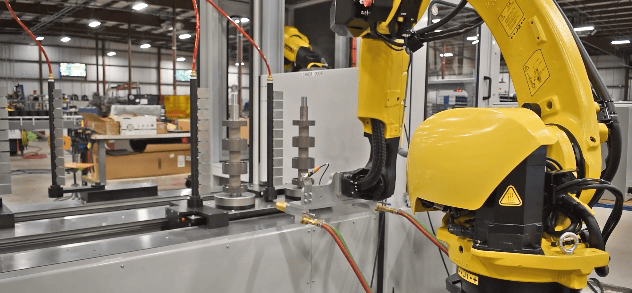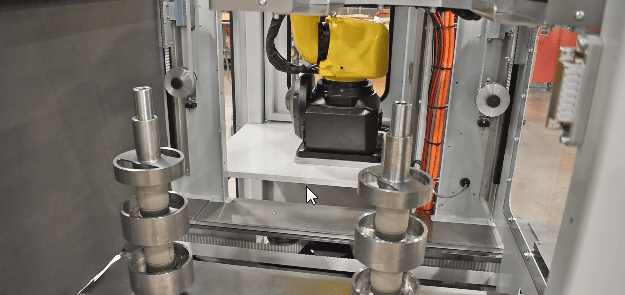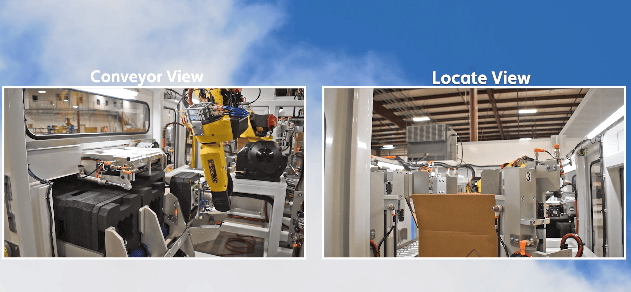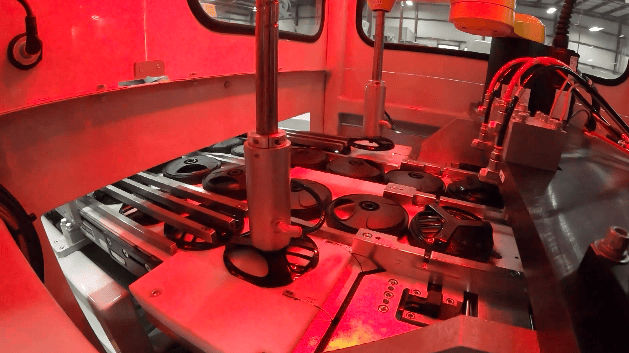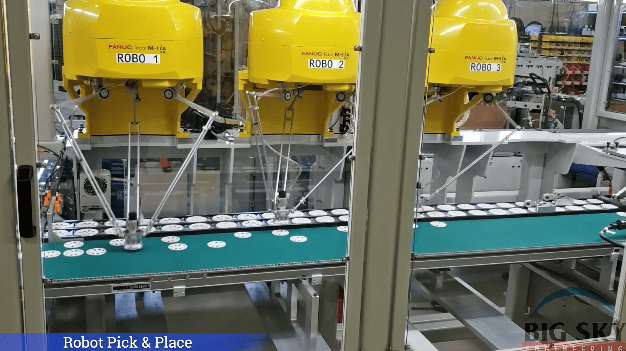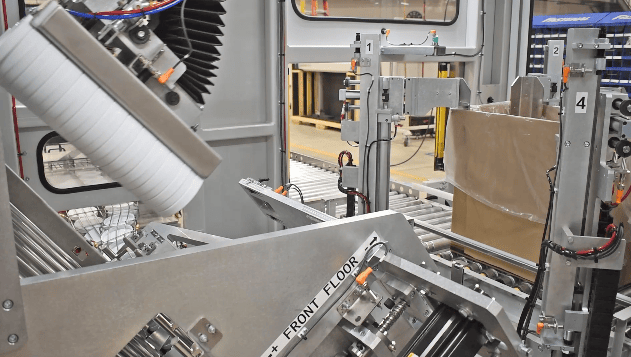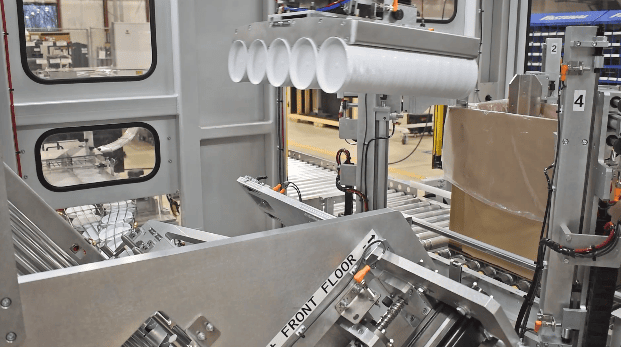Custom Robot Work Cells
Due to better algorithms and stronger processors, robots are now more efficient than ever before. As a result, many manufacturing tasks that were previously tedious or dangerous for humans to perform are being replaced by robots. Industrial robots like the SCARA robot, Delta robot, and other types allow manufacturers to boost their productivity while cutting costs, among many other benefits.
What is Industrial Robotics?
Industrial robots are programmable mechanical devices that carry out tasks within manufacturing settings. They are designed to perform repetitive or dangerous tasks in place of human workers. Most robots used in industrial settings are jointed structures that can take on many different configurations and operate with extreme accuracy.
In contrast to other types of robotics, industrial robots specialize in assembly line production. They have been developed to perform a multitude of strenuous tasks associated with manufacturing. While their characteristics vary according to the needs of each manufacturer, industrial robots are typically large, heavy, and placed in fixed positions within industrial plants.
Making an industrial robot requires a multitude of parts, including cables, grippers, guarding, small parts, and many other components. Computer programs executed by a controller drive industrial robots through a sequence of movements to perform their required tasks. The controller turns on the joint actuators, and signals from the joint sensors are returned to the controller for feedback purposes.
Custom Robot Work Cells
Due to better algorithms and stronger processors, robots are now more efficient than ever before. As a result, many manufacturing tasks that were previously tedious or dangerous for humans to perform are being replaced by robots. Industrial robots like the SCARA robot, Delta robot, and other types allow manufacturers to boost their productivity while cutting costs, among many other benefits.
What is Industrial Robotics?
Industrial robots are programmable mechanical devices that carry out tasks within manufacturing settings. They are designed to perform repetitive or dangerous tasks in place of human workers. Most robots used in industrial settings are jointed structures that can take on many different configurations and operate with extreme accuracy.
In contrast to other types of robotics, industrial robots specialize in assembly line production. They have been developed to perform a multitude of strenuous tasks associated with manufacturing. While their characteristics vary according to the needs of each manufacturer, industrial robots are typically large, heavy, and placed in fixed positions within industrial plants.
Making an industrial robot requires a multitude of parts, including cables, grippers, guarding, small parts, and many other components. Computer programs executed by a controller drive industrial robots through a sequence of movements to perform their required tasks. The controller turns on the joint actuators, and signals from the joint sensors are returned to the controller for feedback purposes.
Types of Robots
Many types of robots are used in industrial settings. As a robotic system design and integration expert, Big Sky Engineering can help you understand your automation options and select the best solution for your needs. The different types of robots used in industrial environments include:
Benefits of Industrial Robots
In today’s competitive global marketplace, improving productivity and cost efficiency is more important than ever. Since industrial robots are capable of non-stop production and do not need to be closely monitored, they can significantly increase operational output and reduce lead times. In addition, because industrial robotics are designed with flexibility in mind, manufacturers can easily reposition, retool, and redeploy robots to carry out new functions. This level of system flexibility is particularly useful in mixed-volume production environments.
No matter what your industry, adopting flexible automation solutions can help you stay ahead of your competition. Businesses that incorporate industrial robots into their assembly lines also enjoy an excellent ROI due to fewer wasted materials, reduced workplace injuries, and the elimination of production inefficiencies. Some other key benefits of industrial robotics include:
- Enhanced product quality. While human workers make occasional mistakes, industrial robots execute tasks without any variability.
- Advanced data analytics. Most industrial robotics are equipped with vision technology and track detailed production data that is then uploaded to analytics applications.
- Gained floor space. Robots can be mounted on walls, ceilings, or compact, mobile bases for repositioning capabilities.
- Freeing workers to perform higher-value tasks. When robots perform tedious tasks, human workers can provide more valuable contributions that require strategy and expertise.
- Improved customer satisfaction. Reduced product variation ensures customers receive the quality they expect. Robotics also allows new products to be rolled out as quickly as possible.
Applications of Industrial Robots
Since industrial robots are highly programmable, there are numerous tasks they can perform. At Big Sky Engineering, we can help you implement a robotic solution for virtually any task. Some of the most common applications our industrial robots perform include:
- Arc Welding
- Spot Welding
- Assembly
- Inspection
- Materials Handling
- Machine Tending
- Painting
- Picking, Packing, and Palletizing
- Mechanical Cutting, Grinding, Deburring, and Polishing
- Gluing, Adhesive Sealing, and Spraying Materials
The robotics used in many of these applications, such as welding and materials handling, have been developed to protect human workers from dangerous tasks. In other applications, such as painting and mechanical cutting, robotics are valuable due to their perfect execution. No matter what benefits you’re looking to achieve from incorporating robotic technology, Big Sky Engineering can help you find the perfect solution.
Industrial Robotics From Big Sky Engineering
At Big Sky Engineering, we create flexible automation solutions using the most advanced robotic technology. Whether you need a solution for robotic palletizing, conveyor systems, or another application, our team can create a superior system that addresses all of your requirements. To learn more about our industrial robotics, contact our team or request a quote today.


